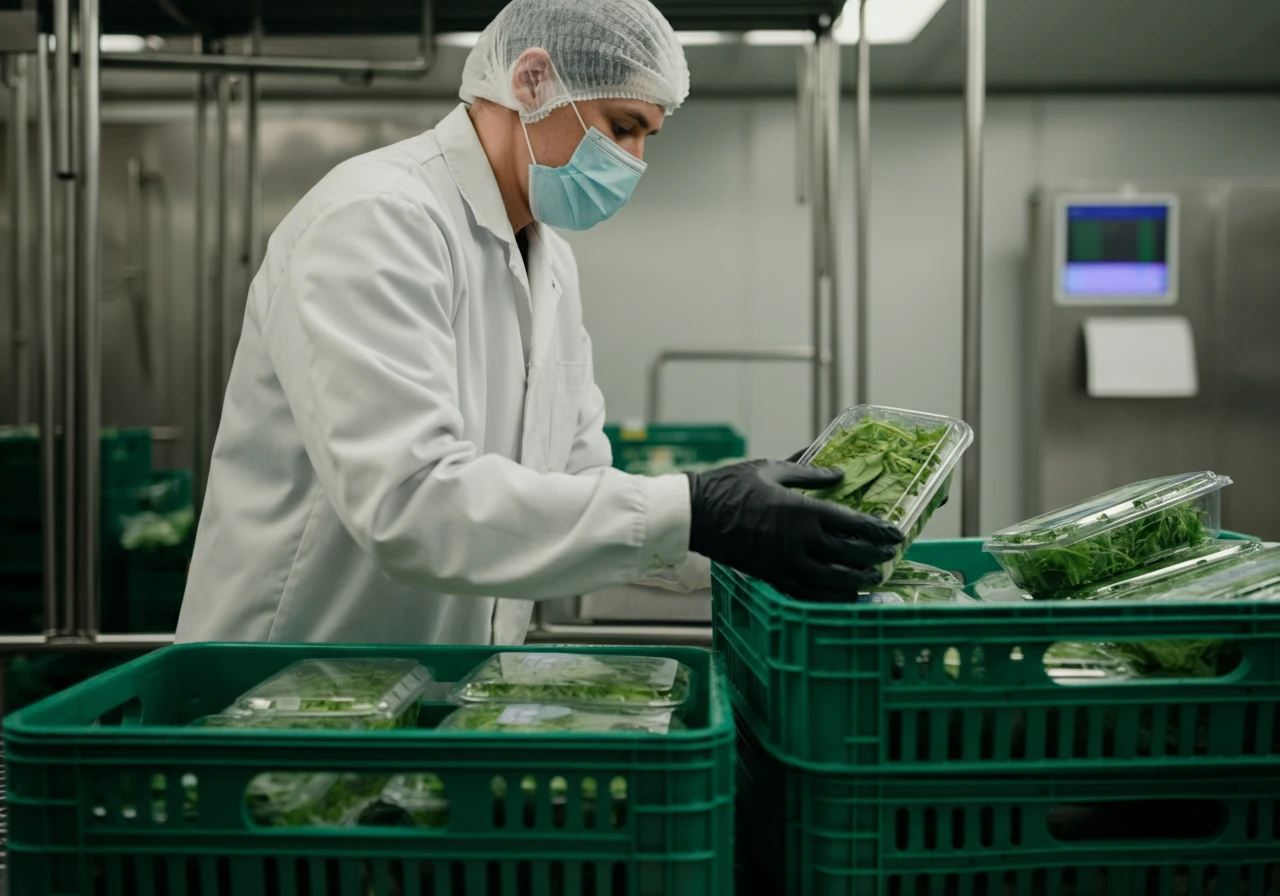In an era where food safety is paramount, businesses in the food industry must prioritise compliance management to ensure the health and safety of consumers. With the global food safety and hygiene compliance market projected to grow significantly, it is essential for companies to adopt robust measures that not only meet regulatory requirements but also enhance operational efficiency. This article will explore key steps businesses can take to manage food safety compliance effectively.
Understanding Food Safety Compliance
Food safety compliance refers to the adherence to regulations and standards designed to ensure that food products are safe for consumption. This encompasses a range of practices, including proper handling, preparation, and storage of food. The importance of compliance is underscored by alarming statistics; for instance, a recent outbreak of listeria linked to deli meats in the US resulted in 28 hospitalisations and 3 deaths, highlighting the dire consequences of inadequate food safety measures.
Furthermore, a survey conducted by the Food and Agriculture Organization (FAO) revealed that 84% of respondents expressed concern about the safety of the food they consume. This statistic emphasises the growing public demand for transparency and accountability in food safety practices. As such, businesses must take proactive steps to ensure compliance with food safety regulations, and many are now turning to food safety compliance management software to streamline processes, improve monitoring, and maintain higher safety standards.

Key Steps for Effective Food Safety Compliance Management
1. Conduct a Comprehensive Risk Assessment
The first step in managing food safety compliance is to conduct a thorough risk assessment. This involves identifying potential hazards at every stage of the food production process, from sourcing raw materials to distribution. By understanding the risks, businesses can implement targeted measures to mitigate them.
Utilising resources such as the CompreHensive European Food Safety (CHEFS) database, which consolidates millions of analytical results, can provide valuable insights into food safety trends and common hazards. This data-driven approach enables businesses to make informed decisions regarding their safety protocols.
More about: What Is Food Safety Compliance? A Complete Guide
2. Develop a Food Safety Management System (FSMS)
Once risks have been identified, the next step is to develop a Food Safety Management System (FSMS). An FSMS outlines the procedures and policies that a business will follow to ensure compliance with food safety regulations. This system should be tailored to the specific needs of the business and include elements such as standard operating procedures (SOPs), training programmes, and monitoring protocols.
Integrating data analytics into the FSMS can significantly enhance its effectiveness. According to experts, the incorporation of analytics allows for preemptive risk addressing and optimised resource allocation, transforming the way food and beverage manufacturers operate.
3. Implement Automated Solutions
In today’s digital age, leveraging technology is crucial for efficient compliance management. Implementing automated solutions for documentation and record-keeping can reduce the time spent on compliance tasks by up to 70%. This not only streamlines operations but also minimises the risk of human error.
Automated systems can facilitate real-time monitoring of food safety parameters, ensuring that any deviations from established standards are promptly addressed. This proactive approach is essential for maintaining compliance and safeguarding public health.
4. Train Staff Regularly
Staff training is a critical component of food safety compliance management. Employees must be well-versed in food safety protocols, hygiene practices, and the importance of compliance. Regular training sessions can help reinforce these principles and keep staff updated on any changes in regulations.
Moreover, fostering a culture of food safety within the organisation encourages employees to take ownership of their roles in maintaining compliance. This collective responsibility can significantly enhance the overall safety standards of the business.
5. Monitor and Review Compliance
Continuous monitoring and review of compliance practices are essential for ensuring that food safety standards are upheld. Businesses should establish regular internal audits to assess the effectiveness of their FSMS and identify areas for improvement. These audits can help detect any non-compliance issues before they escalate into more significant problems.
Additionally, staying informed about changes in food safety regulations is crucial. The food industry is subject to evolving standards, and businesses must adapt their practices accordingly to remain compliant. Subscribing to industry newsletters and participating in relevant training can help keep businesses abreast of these changes.

The Role of Big Data in Food Safety Compliance
The integration of big data into food safety compliance management is revolutionising the industry. The global food safety big data market is expected to grow at a CAGR of 9.3% from 2025 to 2031, driven by the increasing demand for real-time monitoring systems and advancements in IoT technology. By harnessing big data, businesses can gain deeper insights into their operations and enhance their compliance efforts.
For instance, machine learning models such as FINDER have demonstrated the ability to identify restaurants at risk of non-compliance with remarkable accuracy. Establishments flagged by such models were found to be 3.1 times more likely to be deemed unsafe during inspections compared to those identified by traditional methods. This highlights the potential of data-driven approaches in improving food safety compliance.
Conclusion
Food safety compliance management is a critical aspect of operating a successful food business. By conducting comprehensive risk assessments, developing effective FSMS, implementing automated solutions, training staff, and continuously monitoring compliance, businesses can significantly enhance their food safety practices. As the industry continues to evolve, embracing technology and data analytics will be vital in ensuring compliance and safeguarding public health.
In a world where consumers are increasingly concerned about food safety, businesses that prioritise compliance will not only protect their customers but also build trust and loyalty in the marketplace. The steps outlined above provide a roadmap for businesses seeking to navigate the complexities of food safety compliance management effectively.
Learn more: What Is Food Safety Compliance? A Complete Guide
FAQs on Food Safety Compliance Management
Food safety compliance management refers to the systems, processes, and tools businesses use to ensure their food products meet regulatory standards and are safe for consumption.
It helps prevent foodborne illnesses, protects consumers, avoids legal penalties, and builds trust with customers.
The main steps include conducting risk assessments, developing a Food Safety Management System (FSMS), implementing automated solutions, training staff, and monitoring compliance regularly.
An FSMS provides structured procedures and policies, such as SOPs, monitoring protocols, and staff training, to ensure businesses meet safety standards consistently.
Automated solutions and software help with real-time monitoring, record-keeping, and reducing human error, which makes compliance more efficient and reliable.
These are digital solutions that help businesses prepare for food safety audits by organising documentation, monitoring processes, and ensuring compliance is consistently maintained.
Regular training ensures employees understand hygiene practices, food handling standards, and compliance requirements, creating a stronger culture of food safety.
Big data enables predictive analytics, real-time monitoring, and better risk detection, helping businesses prevent issues before they become critical.
Compliance should be reviewed continuously, with regular audits and updates to adapt to changing regulations and industry standards.
It is a digital solution that streamlines compliance by automating documentation, monitoring food safety parameters, managing audits, and ensuring adherence to regulations.

Leave a Reply